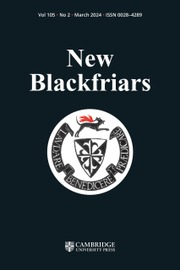No CrossRef data available.
Article contents
The Council and Religious Life
Published online by Cambridge University Press: 01 July 2024
Extract
The Second Vatican Council draws to a close amid the rather general realization that the Catholic Church has reached the end of a historic age. Indeed it is sometimes, provocatively, said that we find ourselves now in the ‘post-Christian era’. Naturally this term has such undertones of pessimism and ambiguity that it cannot be taken too seriously. From the point of view of theology, there can be no post-Christian era. Since the Word became Flesh and dwelt among us, and since ‘behold He is with us all days even to the end of the world’, all ages are His and He is the King of Ages, immortal and invisible. Yet on another level, that of social and cultural history, it may perhaps be possible to find certain fruitful suggestions in this insolent expression.
For over a thousand years the Catholic Church in Western Europe has first helped to build, then to sustain a Christian culture, a ‘Christendom’, which has after all been not without its glory. It is the culture and society not of the last days of the Roman Empire, though inspired by Augustine and the other Latin Fathers, but of Garolingian and then Medieval and Renaissance Europe: the Christendom of Chartres and Canterbury, Paris and Rome, Cambridge and Salamanca, of St Anselm and St Thomas, of St Bernard and Peter the Venerable, of St Francis and St Dominic, Duns Scotus, St Theresa, St John of the Cross, St Ignatius . . . What need is there to go on?
- Type
- Research Article
- Information
- Copyright
- Copyright © 1965 Provincial Council of the English Province of the Order of Preachers


